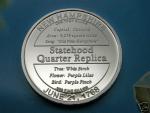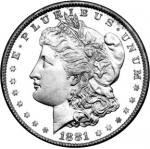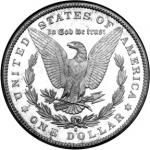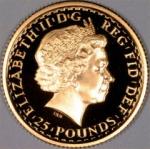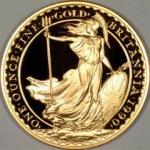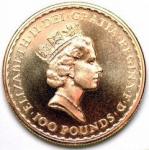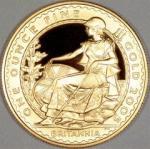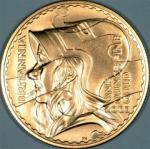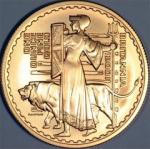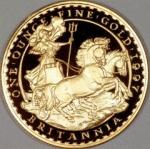-
Posts
208 -
Joined
-
Last visited
Content Type
Profiles
Forums
Blogs
Gallery
Events
Store
Everything posted by mariner
-
I must say, I`ve made a monster here!! I was amazed to here that a medic can qualify for a CAB & CMB. But it does make perfect sense I suppose, as I know of loads of medics that were out of the ground, got into scuffle, but didn`t treat anyone. Thus I suppose they would qualify for a CAB. What would happen if they ended up earning both somehow could they wear them both or would they have to choose, I suppose if they somehow won two of one and one of the other they`d wear the one with the star, but what of the other. I asume that would just be on there records or something? But what do you have to do to qualify for a CAB as a medic? Would the example where one pistol round had been firded at you, by an angry Iraqi as you drove passed on top cover count, or would it have to be a sustained burst of AK, or the like? I assume you have to have infact returned fire? What about attending a post IED incident, where you treated wounded, but all the `shooting & loud bangs` had finished...But a further return to shooting could in theory happen again at anytime?....CMB, CAB or nothing. Either way, I must say that this CAB seems to be a good idea, and puts pay to all the other elements of the military that aren`t infantry, but involved in a combat none the less!
-
Cheers Guys, thats really interesting. I also hadn`t taken into consideration that the regular servicemen might have to do numerous tours over there, in the same way as they do today in Iraq & Afganistan. I wonder what the most time spent over there by a single combat soldier was. Surely it would come to the point where you`ve really pushed you luck !!! I assume that the casualty rates during the Vietnam war where a steady flow, or did it peak and trough? I`m just wondering if you could land a lucky tour, where not a great deal happened. I assume the chances of returning without seeming any combat were minimal. Am I also right in thinking that most guys returned with some sort of medal or other? Mariner
-
Cheers Guys... but going off topic slighty... Individual decorations and service medals Distinguished Service Cross (with Oak Leaf Cluster)[2] Silver Star (with nine Oak Leaf Clusters)[2] Legion of Merit (with three Oak Leaf Clusters)[2] Distinguished Flying Cross[2] Bronze Star Medal (with "V" Device & seven Oak Leaf Clusters)[2] Purple Heart (with seven Oak Leaf Clusters)[2] Air Medal (with "V" Device & Numeral 34) (One for heroism and 33 for aerial achievement)[2] Army Commendation Medal (with "V" Device & 3 Oak Leaf Clusters)[2] Good Conduct Medal[2] World War II Victory Medal[2] Army of Occupation Medal (with Germany and Japan Clasps)[2] National Defense Service Medal (with one Bronze Service star)[2] Korean Service Medal (with Service Stars for eight campaigns)[2] Armed Forces Expeditionary Medal[2] Vietnam Service Medal (2 Silver Service stars)[2] Armed Forces Reserve Medal[2] 34 Air Medals, surely this is a typing error? How on earth could you win that many awards? What type of things is it awarded for? Also what do all the stars on the campaign medals mean?
-
Cheers Guys. Makes perfect sense now. I agree you wouldn`t want to share a trench with someone who continually gets hit...I saw a documentary recently during which a guy won his 4th Purple Heart in Vietnam. I wonder whats the most that have ever been won by one guy? Any ideas......
-
Hi Guys, Can anyone explain to me how the Purple Heart multiple awards device system works? I`m aware that there are oak leaf clusters & stars, but what do they all represent?
-
So that being said, would a medic who found himself engaged in a fire fight, but not called upon to treat any casualties, would that medic, be entitled to any award? Also how long does a `contact` have to last in order to qualify for either CAB/CIB or CMB? What if the contact lasted but a few seconds, a burst of AK say, no one has time to return fire, before its all over. But one guy is hit & needs treating. Would the medic qualify for a CMB, and to that end would the infantry guys qualify for a CIB?
-

Student serves country with National Guard in Iraq
mariner replied to bigjarofwasps's topic in Modern Campaigns and Conflicts
Sisters in arms decline return to war Torn between family and a call to duty, two Wisconsin soldiers whose sister was killed in Iraq have decided not to return to their combat units there. After "a profoundly difficult and complex" decision, Rachel and Charity Witmer said in a statement that they had accepted the advice of Major-General Al Wilkening, of the Wisconsin National Guard, and would take new non-combat assignments outside Iraq. "Although he said he could not 'order' us to request reassignment, he was very clear to point out that a decision to return to Iraq might expose our fellow soldiers to increased danger. This we will not do," they said in a statement. General Wilkening was not only concerned about the Witmer family but the potential hazard the sisters' return might have posed to their units because of the notoriety of their case. A spokesman for the Wisconsin Army and Air National Guard said the Witmers' high profile had attracted attention that "they neither asked for nor wanted". Michelle, 20, a member of a Wisconsin National Guard military police unit, was killed in an ambush in Baghdad on April 9. -

50 States Silver Quarters
mariner replied to bigjarofwasps's topic in Coins & Commemorative Medallions
In addition to my last, have you seen these? .999 silver 1 oz, just a shame about the reverse. Would have been nicer if they`d been an exact copy, maybe in 1 dollar format? -

50 States Silver Quarters
mariner replied to bigjarofwasps's topic in Coins & Commemorative Medallions
Must admit, I prefer the idea of the silver ones personally (even given the fact that there only .900, why they didn`t got the whole hog and make them .999 like the eagle, I have no idea- given that they weren`t ment for general circulation?). The question I have is how you tell the difference between the proof & the silver given that they both have the `S` mint mark? Does anyone know? Have seen alledged silver ones on ebay, but they look exactly the same as the none silver ones to me? Also why didn`t they make silver ones with other mint marks to increase the collecting protential for collectors, a sure money spinner missed there I think? -

50 States Silver Quarters
mariner replied to bigjarofwasps's topic in Coins & Commemorative Medallions
Starting in 1999 with the release of five new quarters with a state design on the reverse, the U.S. Mint has taken on the longest commemorative program in its history. The initial plan was to issue five quarters per year, in the order of each state's joining the Union. Delaware was first. Collectors immediately started scouring new bank-wrapped rolls for the new issues. Making the collection complete, however, takes more than just searching through bank-wrapped rolls and loose change. For each year, five new designs are issued ? five with a "D" mint mark (from the Denver mint) and the same five designs with a "P" mint mark (from the Philadelphia mint). In addition, two matching designs are issued each year from the San Francisco mint with an "S" mint mark. One of these is a "proof" issue in the regular, copper-nickel clad composition; and a special proof issue in silver. These "S" mint coins are available only by subscription from the U.S. Mint, so they would most likely never be found in circulation. Also, the number of "S" mint coins is far smaller than the regular "P" and "D" mint issues. Thus, for a complete collection (due by 2010), there would be 220 coins. After the program began, it was announced that in addition to the 50 states, five more territories would be added: District of Columbia, Puerto Rico, Guam, U.S. Virgin Islands and American Samoa. So far, the annual mintage figures for each issue run about 250 million to 400 million coins, and for the proof issues, 1 million in clad and about 800,000 for the silver proofs. The proof coins are sold in sets of five. How valuable the complete set would be is uncertain; it depends heavily on the collector demand for complete sets and on the ability to find choice uncirculated and proof coins for each date and mint mark. Thus far, all P- and D-mint mark coins can be found in circulation, and even in mint condition are worth barely more than face value. By 2010, conditions may change; we'll just have to wait an see. For children, a complete set of 55 types would be an inexpensive challenge ? and educational, as well. http://www.scvhistory.com/scvhistory/signa...43005-coins.htm -
Morgan dollars.... Found this... Political pressure, not public demand, brought the Morgan dollar into being. There was no real need for a new silver dollar in the late 1870s; the last previous "cartwheel," the Liberty Seated dollar, had been legislated out of existence in 1873, and hardly anyone missed it. Silver-mining interests did miss the dollar, though, and lobbied Congress forcefully for its return. The Comstock Lode in Nevada was yielding huge quantities of silver, with ore worth $36 million being extracted annually. After several futile attempts, the silver forces in Congress-led by Representative Richard ("Silver Dick") Bland of Missouri-finally succeeded in winning authorization for a new silver dollar when Congress passed the Bland-Allison Act on February 28, 1878. This Act required the Treasury to purchase at market levels between two million and four million dollars of silver bullion every month to be coined into dollars. This amounted to a small subsidy, coming at a time when the dollar's face value exceeded its intrinsic worth by only 0.07%. In November 1877, nearly four months before passage of the Bland-Allison Act, the Treasury saw the handwriting on the wall and began making preparations for a new dollar coin. Mint Director Henry P. Linderman ordered Chief Engraver William Barber and one of his assistants, George T. Morgan, to prepare pattern dollars, with the best design to be used on the new coin. Actually, Linderman fixed this "contest" in Morgan's favor; he had been dissatisfied with the work of the two Barbers-William and his son, Charles-and in 1876 had hired Morgan, a talented British engraver, with plans to entrust him with new coin designs. At that time, resumption of silver dollar coinage was not yet planned, and Morgan began work on designs intended for the half dollar. Following Linderman's orders that a head of Liberty should replace the full-figure depiction then in use, Morgan recruited Philadelphia school teacher Anna Willess Williams to pose for the new design. Morgan's obverse features a left-facing portrait of Miss Liberty. The reverse depicts a somewhat scrawny eagle which led some to vilify the coin as a "buzzard dollar." The designer's initial M appears on both sides-a first. It's on the truncation of Liberty's neck and on the ribbon's left loop on the reverse. Mintmarks (O, S, D, and CC) are found below the wreath on the reverse. Points to check for wear on Morgans are the hair above Liberty's eye and ear, the high upper fold of her cap and the crest of the eagle's breast. Soon after production began, someone advised the Mint that the eagle should have seven tail feathers, instead of the eight being shown, and Linderman ordered this change. As a result, some 1878 Morgan dollars have eight feathers, some seven-and some show seven over eight. The seven-over-eight variety is the scarcest, though all are fairly common. More than half a billion Morgan dollars were struck from 1878 through 1904, with production taking place at the main mint in Philadelphia and the branches in New Orleans, San Francisco and Carson City. Carson City production was generally much lower and ended altogether after that branch was closed in 1893. The coin came back for one final curtain call in 1921, when more than 86 million examples were produced under the terms of the Pittman Act at Philadelphia, San Francisco and Denver-but that was a double-edged sword: Under the 1918 legislation, more than 270 million older silver dollars, almost all Morgans, had been melted. The law required replacements for these, but most were of the Peace design, which replaced the Morgan version at the end of 1921. In all, some 657 million Morgan dollars were produced in 96 different date-and-mint combinations. Hundreds of millions were melted over the years-by the government under the Pittman Act and the Silver Act of 1942, and by private refiners since the late 1960s, when rising silver prices made this profitable. Despite all the melting, Americans had more than enough Morgans to fill their daily needs, since the dollars circulated regularly only in the West. As a result, huge stockpiles remained in the Treasury's vaults, as well as bank vaults nationwide. This explains why so many Morgan dollars are so well preserved today despite their age; few saw actual use. Even as the numismatic hobby underwent rapid growth beginning in the 1930s, interest in other collecting areas far outpaced the attention paid to the large Morgan cartwheels. Most collectors preferred the lower face-value coins (with their lower cost) that were readily available in circulation. Although it was possible to order silver dollars through banks or directly from the Treasury, few noticed or cared. In the late 1930s, however, several Washington dealers learned that the Treasury Department's Cash Room near the White House was paying out uncirculated Carson City dollar-coins having a market value of $5 or more at the time! More than a few dealers quietly exploited this discovery throughout the 1940s and '50s. In the early 1960s, with silver rising in price, opportunists recognized the chance to turn fast profits by redeeming silver certificates for dollar coins-mostly Morgans-at the Treasury. By the time the government closed this lucrative window in 1964, only 2.9 million cartwheels were left in its vaults, almost all of them scarce Carson City Morgans. These were dispersed by the General Services Administration in a series of mail-bid sales from 1972 through 1980, earning big profits for the government and triggering great new interest in silver dollars. Interest in Morgans was further heightened by the publicity surrounding the 400,000+ dollars found in the basement of Nevada eccentric LaVere Redfield's home. After word leaked out of the amazing cache, several dealers got into the act, each jockeying for position in a scramble that ultimately ended with a Probate Court auction held in January of 1976. At that sale, A-Mark Coins of Los Angeles captured the hoard with a winning bid of $7.3 million. The coins were cooperatively marketed by a number of dealers over a period of several years. Rather than depressing prices, the orderly dispersal of these coins only served to bring more collectors into the Morgan dollar fold. Similarly, the early 1980s witnessed the equally successful distribution of the 1.5 million silver dollars in the Continental Bank hoard. The Morgan dollar's story is a Cinderella tale: Until the 1960s, it was largely ignored by the public. Since then, it has gradually become among the most widely pursued and desired of all U. S. coins. Although many collectors find the challenge of assembling a complete date and mintmark set in Mint State compelling, others satisfy themselves with collecting just one coin per year. Exceptional specimens are also sought after by type collectors. Major keys include 1895, 1893-S, 1895-O, 1892-S, 1889-CC, 1884-S and 1879-CC. Mint records show that 12,000 business-strike dollars were made in Philadelphia in 1895, but only proofs are known; the mintage of these is 880. Proofs were made for every year in the series, but only a few brilliant proofs-variously reported at 15 to 24-are known for 1921. Prooflike Morgans also are highly prized and are collected in both Prooflike (PL) and Deep-Mirror Prooflike (DPL or DMPL). Few coins in U.S. history have been greeted with more indifference at the time of their release than this silver dollar. And few, if any, have then gone on to stimulate such passionate excitement among collectors. SPECIFICATIONS: Diameter: 38.1 millimeters Weight: 26.73 grams Composition: .900 silver, .100 copper Edge: Reeded Net Weight: .77344 ounce pure silver
-
Does anyone know anything about the Pittman Act of 1918? Also what happened in 1962, to make silver prices rise so high?
-

Roll of Honour Afganistan
mariner replied to bigjarofwasps's topic in Modern Campaigns and Conflicts
http://en.wikipedia.org/wiki/British_force..._in_Afghanistan -

Roll of Honour Afganistan
mariner replied to bigjarofwasps's topic in Modern Campaigns and Conflicts
13/01/07 Curry, Thomas Marine 21 M Company, 42 Commando, Royal Marines Hostile - small arms fire Kajaki, Northern Helmand Province London, England 27/12/06 Dwyer, James Lance Bombardier 22 29 Commando Regiment, Royal Artillery Hostile - land mine strike Southern Helmand Province South Africa 12/12/06 Watson, Richard J. Marine 23 K Company, 42 Commando, Royal Marines Hostile - hostile fire - small arms fire Now Zad (Now Zad, northern Helmand Province) Caterham, Surrey, England. 05/12/06 Wigley, Jonathan Marine 21 Zulu Company, 45 Commando, Royal Marines Hostile - hostile fire Southern Helmand Province Melton Mowbray, Leicestershire England 18/10/06 Wright, Gary Marine 22 45 Commando, Royal Marines Hostile - hostile fire - suicide bomber Lashkar Gah, Helmand Province Glasgow, Scotland 06/09/06 Muirhead, Paul[1] Lance Corporal 29 1st Battalion, Royal Irish Regiment Hostile Musa Quala (Helmand Province) Bearley, Warwickshire England 06/09/06 Wright, Mark William[2] Corporal 25 3rd Battalion, The Parachute Regiment Hostile fire - land mine Kajaki (Helmand Province) Edinburgh Scotland 06/09/06 McCulloch, Luke Lance Corporal 21 1st Battalion, The Royal Irish Regiment Hostile [22] Sangin (Helmand province) Cape Town South Africa 04/09/06 O?Donnell, Craig[3] Private 24 Argyll and Sutherland Highlanders, 5th Battalion, Royal Regiment of Scotland Hostile fire - suicide bomber Kabul Clydebank, Dunbartonshire Scotland 02/09/06 Dicketts, Oliver Simon[4] Lance Corporal 27 The Parachute Regiment Non-hostile - aeroplane crash Southern Afghanistan Wadhurst, East Sussex, England 02/09/06 Windall, Joseph David[4] Private 22 Royal Marines Non-hostile - aeroplane crash Southern Afghanistan Hazlemere, Buckinghamshire England 02/09/06 Quilliam, Gary Paul[4] Sergeant (Weapons Systems Operator) 42 No. 120 Squadron RAF Non-hostile - aeroplane crash Southern Afghanistan Manchester England 02/09/06 Langton, John Joseph[4] Sergeant (Weapons Systems Operator) 29 No. 120 Squadron RAF Non-hostile - aeroplane crash Southern Afghanistan Liverpool England 02/09/06 Knight, Benjamin James[4] Sergeant (Weapons Systems Operator) 25 No. 120 Squadron RAF Non-hostile - aeroplane crash Southern Afghanistan Bridgewater England 02/09/06 Davies, Adrian Flight[4] Sergeant (Air Engineer) 49 No. 120 Squadron RAF Non-hostile - aeroplane crash Southern Afghanistan Amersham, Bucks England 02/09/06 Bell, Gerard Martin Flight[4] Sergeant (Weapons System Operator) 48 No. 120 Squadron RAF Non-hostile - aeroplane crash Southern Afghanistan Cambridgeshire England 02/09/06 Beattie, Stephen[4] Flight Sergeant (Weapons System Operator) 42 UK Royal Air Force Number 120 Squadron Non-hostile - aeroplane crash Southern Afghanistan Dundee, Scotland 02/09/06 Andrews, Gary Wayne Flight[4] Sergeant 48 No. 120 Squadron RAF Non-hostile - aeroplane crash Southern Afghanistan Tankerton in Kent England 02/09/06 Swarbrick, Steven[4] Flt Lt (pilot) 28 No. 120 Squadron RAF Non-hostile - aeroplane crash Southern Afghanistan Liverpool England 02/09/06 Squires, Allan James[4] Flt Lt (pilot and captain) 39 No. 120 Squadron RAF Non-hostile - aeroplane crash Southern Afghanistan Clatterbridge England 02/09/06 Nicholas, Gareth Rodney[4] Flt Lt (Weapon System Officer - Navigator) 40 No. 120 Squadron RAF Non-hostile - aeroplane crash Southern Afghanistan Newquay, Cornwall England 02/09/06 Mitchelmore, Leigh Anthony[4] Flt Lt (Weapon System Officer - Navigator) 28 No. 120 Squadron RAF Non-hostile - aeroplane crash Southern Afghanistan Bournemouth England 02/09/06 Johnson, Steven[4] Flt Lt (Weapon System Officer - Navigator) 38 No. 120 Squadron RAF Non-hostile - aeroplane crash Southern Afghanistan Collingham, Notts England 01/09/06 Draiva, Anare Ranger 27 1st Battalion, Royal Irish Regiment Hostile Musa Quala (Helmand Province) Afghanistan Fiji 27/08/06 Hetherington, Jonathan[5] Lance Corporal 22 14 Signal Regiment Hostile fire Musa Qaleh (northern Helmand Province) Salisbury, Wiltshire, England 20/08/06 Budd, Bryan James[6] Corporal 29 3rd Battalion, The Parachute Regiment Hostile fire - small arms fire Sangin (Helmand province) Ripon, North Yorks England 12/08/06 Tansey, Sean Lance Corporal 26 The Life Guards Non-hostile - accident Helmand province Washington, Tyne and Wear England 09/08/06 Reeves, Leigh Private 25 Royal Logistic Corps Non-hostile - vehicle accident Kabul (Camp Souter) Leicester England 06/08/06 Cutts, Andrew Barrie Private 20 13 Air Assault Support Regiment, Royal Logistic Corps Hostile fire - small arms fire Musa Qualeh (Helmand Province) Blidworth, Nottinghamshire England 01/08/06 Nicholls, Ross Lance Corporal 27 Household Cavalry Regiment Hostile fire - small arms fire, RPG Helmand Province Afghanistan Edinburgh Scotland 01/08/06 Johnson, Ralph 2nd Lieutenant 24 UK British Army Household Cavalry Regiment Hostile fire - small arms fire, RPG Helmand Province Windsor England 01/08/06 Eida, Alex Captain 29 Royal Horse Artillery Hostile fire - small arms fire, RPG Helmand Province Surrey England 05/07/06 Jackson, Damien Raymond Private 19 3rd Battalion, The Parachute Regiment Hostile fire - small arms fire Sangin (Helmand Province) South Shields, Tyne and Wear England 01/07/06 Hashmi, Jabron Lance Corporal 25 14 Signal Regiment Hostile fire - small arms fire Sangin District (Helmand Province) Birmingham England 01/07/06 Thorpe, Peter Corporal 28 14 Signal Regiment Hostile fire - small arms fire Sangin District (Helmand Province) Cumbria England 27/06/06 Bartlett, Paul Sergeant 35 Special Boat Service, Royal Marines Hostile fire Sangin valley (Helmand Province) Poole, Dorset, England 27/06/06 Patten, David Captain 39 Parachute Regiment Special Reconnaissance Regiment Hostile fire Sangin valley (Helmand Province) Ulster Ireland 12/06/06 Philippson, Jim Captain 29 7 Parachute Regiment Royal Horse Artillery Hostile fire Helmand Province St Albans Hertfordshire 27/03/06 Craddock, Peter Edward Lance Corporal ? 1st Battalion, The Royal Gloucestershire, Berkshire and Wiltshire Light Infantry Non-hostile - vehicle accident Lashkar Gah (Helmand Province) Newberry England 22/03/06 Cridge, Mark Corporal 25 7 Signal Regiment, Royal Signals Non-hostile - unspecified cause Camp Bastion (Helmand Province) Not reported yet 29/10/05 Sherwood, Steven Lance Corporal 23 1st Battalion, The Royal Gloucestershire, Berkshire and Wiltshire Light Infantry Hostile fire Mazar-e Sharif Ross-on-Wye Herefordshire 28/01/04 Kitulagoda, Jonathan Private 23 E (Devon & Dorset) Company, The Rifle Volunteers, (Territorial Army) Hostile fire - suicide bomber Kabul Plymouth 17/08/02 Busuttil, Robert Sergeant 30 Royal Logistics Corps Non-hostile - homicide Kabul Tycoch Swansea 17/08/02 Gregory, John Corporal 30 Royal Logistics Corps Non-hostile - suicide British base at Kabul International Airport Catterick North Yorkshire 09/04/02 George, Darren John Lance Corporal 22 1st Battalion, Royal Anglian Regiment Non-hostile - weapon discharge (accid.) Kabul Basildon Essex -
The British Royal Mint introduced gold bullion coins, called Britannias in 1987. They are made in four different sizes, from one ounce down to one tenth of an ounce. The one ounce size has a face value of ?100, and the others have ?50, ?25, and ?10 face value respectively. For the first three years, they were issued in a reddish gold, from 1990 onwards some silver was added to the copper used to make up the alloy, and they have a more attractive yellow colour. Date Mintage 1987 3,500 1988 0* 1989 0* 1990 0* 1991 0* 1992 0* 1993 0* 1994 0* 1995 0* 1996 0* 1997 923 1998 560 1999 1,000 2000 500 2001 500 2002 750 2003 604 2004 750 2005 750 2006 0* means none issued separately, only as part of complete four coin sets.
-
I suppose that you could argue that the silver Britannia is just as nice, and a much cheaper option?
-
-
http://www.taxfreegold.co.uk/britanniasinfo.html Have just learned about these coins, thought it might be of interest......... They seem to offer a bit more to collectors than the Sovereign & the Krugerrand, due to the different designs available. I find them very pleasing to look at, and may well add a few to my collection...
-
In 1987, Britannia finally received the accolade of being promoted to a gold coin for the first time ever, at least since Roman times. Britain decided to compete with the successful South African krugerrand bullion coin which had been minted by the million since introduced in 1967. The gold Britannia was born. In one ounce, half ounce, quarter ounce, and tenth ounce sizes, the new Britannia bullion coins had a face value of ?100, ?50, ?25, and ?10 each respectively. The weights quoted are the actual amount of fine or pure gold contained. Because of VAT on gold coins in the UK, sales of gold Britannias never took off in the way that krugerrands had, but now that most gold coins are exempt from VAT, as from January 1st, 2000, we hope that they will become more popular. They are a far more attractive design than the krugerrand. The gold Britannia features a standing figure of Britannia, similar to that used on the Edward VII florins. The new "Standing Britannia" used on the gold Britannia coins was designed by sculptor Philip Nathan.
-
PETITION TO REVOKE BRONZE STAR AWARDED 22 JULY 03 TO JESSICA LYNCH, PRIVATE FIRST CLASS, 507th MAINTENANCE COMPANY, U.S. ARMY FOR SERVICE IN IRAQ http://www.petitiononline.com/Revoke/petition.html
-
Now that the whole story as been revealed a spin, surely she still isn`t considered a hero in the US? Why a 2004 Silver Eagle...WHY? I see on Ebay that there is also numerous 2003 ones, with her autograph on. Total scam, I think. Especially as they are grossly over priced!!! Didn`t she get a Bronze Star was well? I assume it was just a good girl one as apposed to with `V` for valor? Anyone know?
-
Coins from these countries were also recovered, I believe... 1) Mexico 2) Uruguay 3) Hungary 4) Austria 5) South Africa 6) Canada 7) Australia 8) USA 9) Jamaica 10) England
-
Not just American silver & gold coins it seems... WTC Ground Zero Recovery 1989 $5 Maple Leaf Canada...Item number: 250136766427
-
"the 1987 MS69 American Silver Eagles recovered from the World Trade Center Recovery. This coins is far more rare than the 2001 which is trending over $300. This is the most rare MS69 Silver Eagle recovered from the WTC next to the 1993. You need to own at least one of these, more if you can. On November 1, 2001 nearly 2 months after the disaster that changed our country forever, these American Eagles were recovered intact within the Iron Mountain Vault located under the World Trade Center. Most would agree that is is a miracle that anything survived. Under heavy guard, these coins were hauled away by Brinks and stored under lock and key until they were certifed and graded by PCGS. This Gold Eagle will come with a Flag Coin Holder that will protect and enhance your investment. There are less than 1000 of these 1987 Silver Eagles that PCGS certified as MS-69 that survived the disaster, a truly outstanding collectible!"



